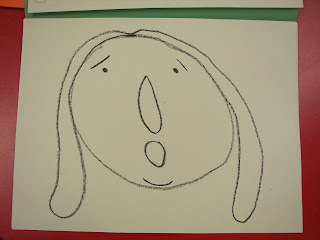I love to reward my students. I began good behavior art parties my first year of teaching after one of my student teacher placements did them. The parties are not only fun for the kids but they are a part of my behavior management plan.
It all begins with my whole class behavior chart.
With this chart each class had to get 9 green days to earn a party. This made it so classes could only earn 4 parties a year at most. Some classes would only get 2 a year...
This is my new game board chart. At the beginning of class classes start with 3 points. If they get too loud, or whatever else, they lose a point. At the end of class I move their game piece the number of points they have earned. There are 27 spaces. 27/3 is 9 for 9 weeks. Again, classes can earn up to 4 parties a year.
If a class misses a day due to an event or snow day I will automatically give them 3 points for the missed day.
Closer look at the game pieces. I use Post Its brand bookmarks.
FYI students love the game board more than the chart.
PARTY TIME!!
Most of the time I use ART CENTERS. Sound familiar to my faithful followers? Check here if not.
Good Behavior Art Party centers are a bit different, but the set up and execution are the same.
I set up 3 centers. I have 6 tables so I set up 2 tables for each center. Students may sit where they want as long as there are still 4 chairs at each table. I explain it to the kids as follows:
"For your Art Party you will be doing three centers. You will be at each center for 10 minutes. When the timer goes off you will clean up your center and sit quietly. Change to the next center when I say "GO". You may begin the next center as soon as you get there. "
Center times will depend on the amount of time you have. Adjust accordingly.
I like to change my centers up a bit each nine weeks. Here are pics from my first parties this year.
 |
| Free Paint. Only one paper. Must write name first. Don't forget to Swish, Wipe, and Blot. Cleanup: Paintings to the rack and refill water cups. |
 |
| Play Dough! Each student gets one container of play dough. No mixing or sharing. Cleanup: mush up all play dough crumbs and put back into container. |
Side note: If a student has had to pull their card through the nine weeks and has ended up in time out, they will serve the time out time again at their party. DON! DON! DON!
Do you have good behavior rewards? What are they?







 Posted by
Posted by


























































.jpg)
























































































